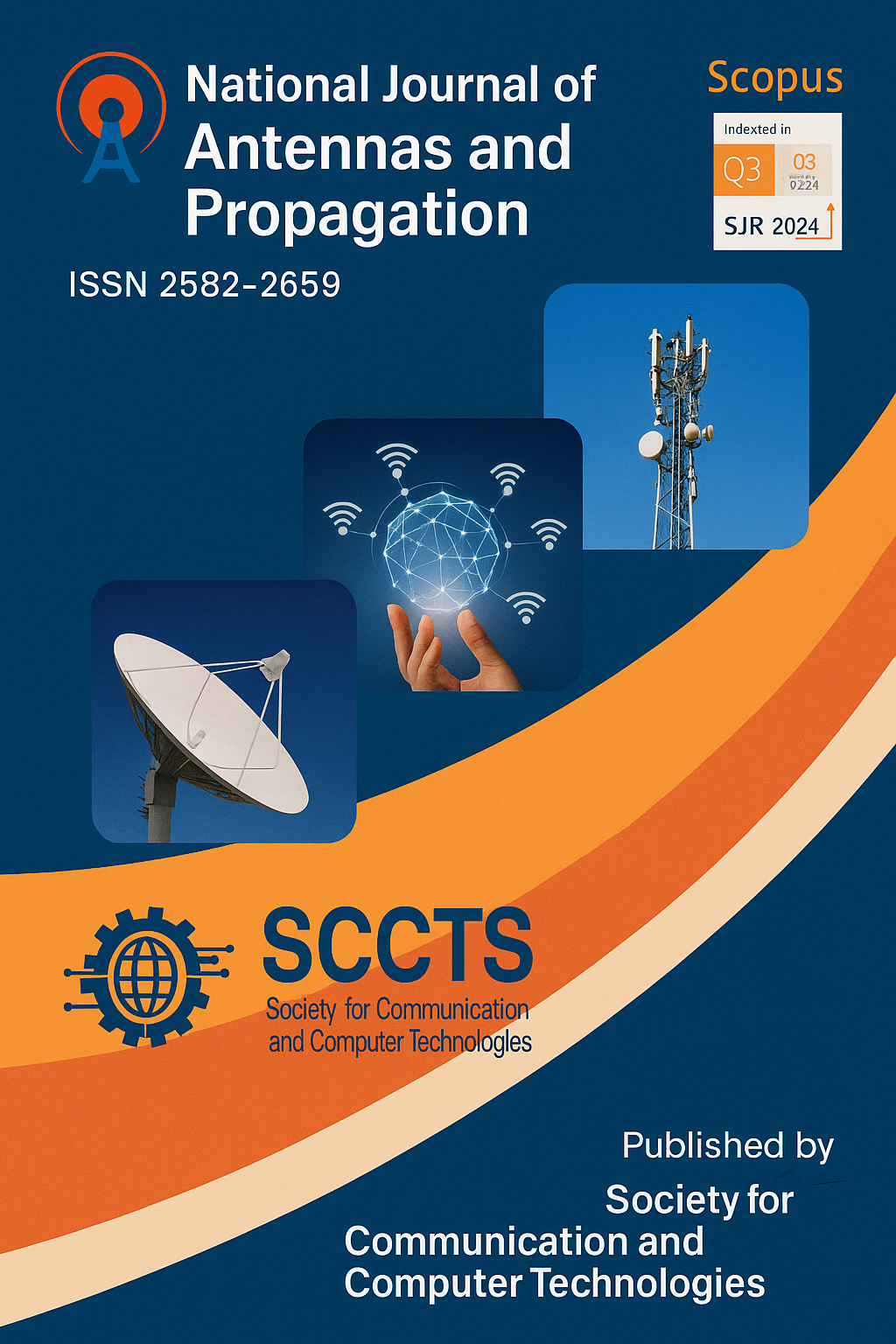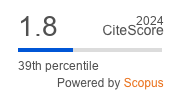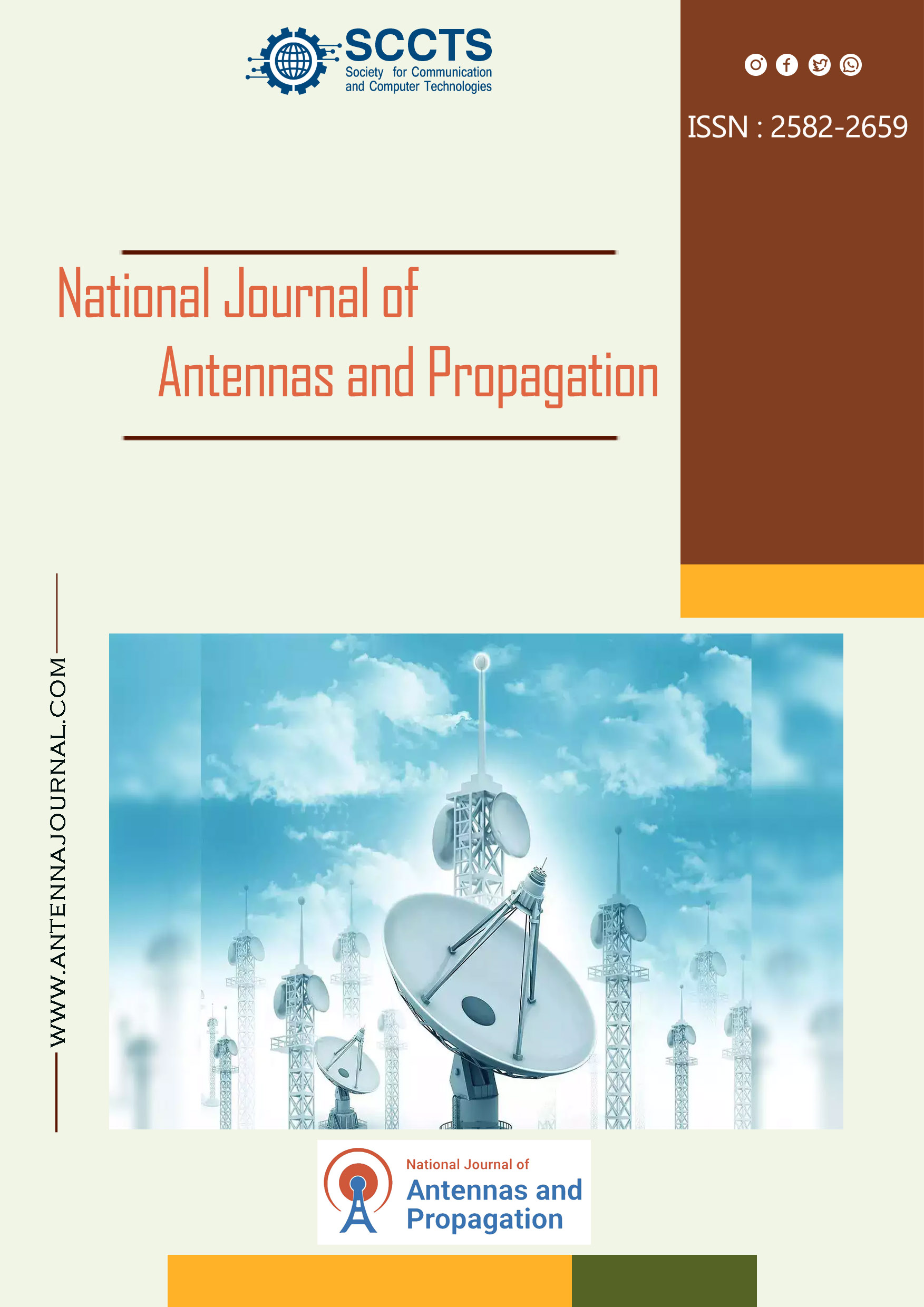Design and Optimization of MIMO Antenna Using Machine Learning Algorithm for IoT Applications
DOI:
https://doi.org/10.31838/NJAP/06.03.05Keywords:
Multiple Input Multiple Output, Antenna, Machine Learning, Internet of ThingsAbstract
This study presents an innovative dielectric resonance antenna concept for 5G-oriented Internet of Things (IoT) systems within the 6 GHz frequency spectrum sub-band. The antennae are constructed on a 1.5-mm-thicknessFlame Retardant Level 4 (FR-4) substrates measuring 35 by 55 mm. The suggested antenna is constructed from alumina and is energized via a 50-ohm microstrip feedline. The combined configuration of circular and rectangle resonance components on the FR4 substrate enhances the radiating process of the proposed device. The antenna layout procedure commences with the creation of the antenna in the Ansys High-Frequency Structure Simulator (HFSS)Electromagnetic (EM) training tool, followed by optimization through machine learning according to the goal parameters of the antenna configuration.A dataset including 2500 samples is constructed in HFSS and utilized by several machine learning methods for optimizing depending on information patterns. Following the optimizing process, the antennae layout is manufactured and evaluated. The suggested antennae provide a broad capacity of 1.2 GHz, from 3.4 to 4.5 GHz, and resonated at 3.8 GHz, rendering it appropriate for 5G IoT scenarios.











